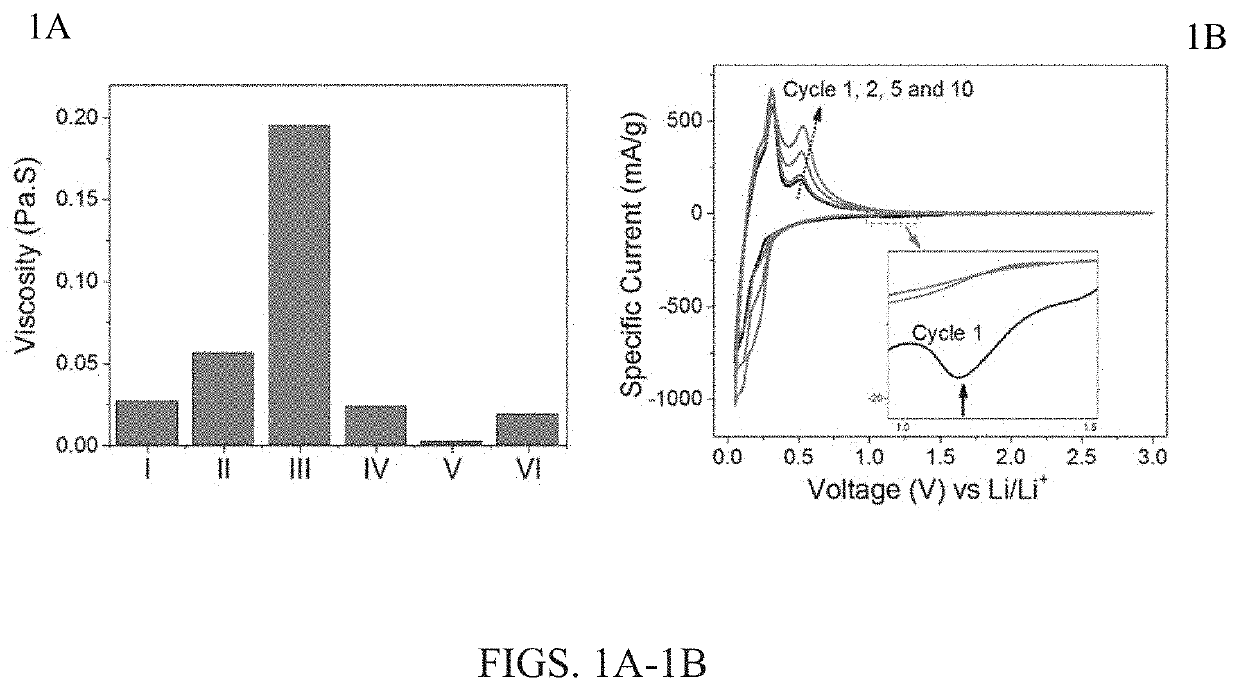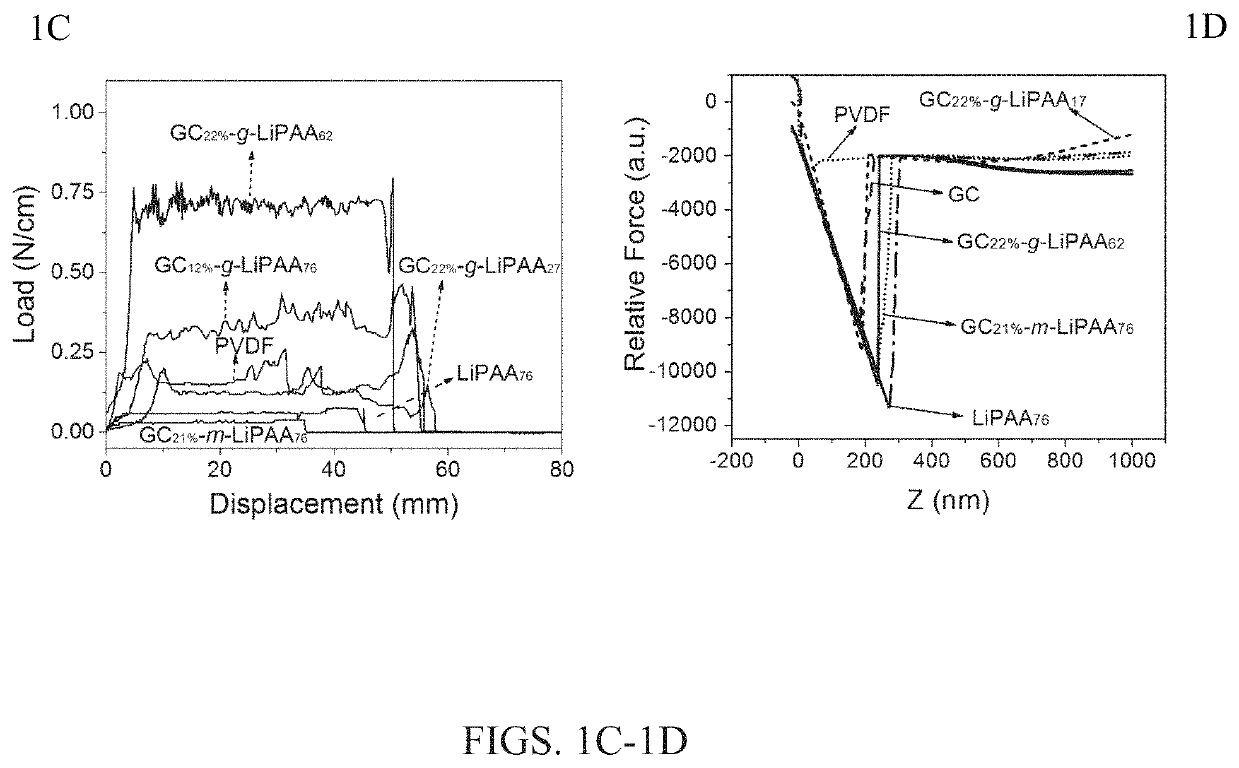Block graft copolymer binders and their use in silicon-containing anodes of lithium-ion batteries
a lithium-ion battery and copolymer binder technology, applied in the direction of negative electrodes, cell components, electrochemical generators, etc., can solve the problems of difficult deployment in practical applications, and cannot meet the long cycle life required for typical electric vehicle applications, and achieve high coulombic efficiency, high reversible capacity, and high retention capacity
- Summary
- Abstract
- Description
- Claims
- Application Information
AI Technical Summary
Benefits of technology
Problems solved by technology
Method used
Image
Examples
examples
[0046]Synthesis of a Series of Graft Polymer Compositions Containing a Glycol Chitosan (GC) Backbone and Poly(Acrylic Acid) (PAA) Graft Polymer Side Chains
[0047]The synthetic methodology used in the following experiments is in accordance with the following general scheme:
[0048]
[0049]Synthesis of the Macro-RAFT-CTA (Compound 3).
[0050]A typical synthesis of GC22%-RAFT was performed as follows: 800 mg (3.60 mmol repeating units) of GC was dissolved in 120 mL of mixed solvent V(H2O) / V(CH3OH)=2:1 by vigorously stirring overnight at 45° C. EDC (0.552 g, 2.88 mmol) and NHS (0.332 g, 2.88 mmol) were added to the solution by the addition of 0.514 g (2.16 mmol) of carboxylic acid terminated RAFT-CTA (compound 2) in 10 mL of mixed solvent V(H2O) / V(CH3OH)=1:1. The mixture was stirred at 35° C. for two days before it was purified by dialysis using a semi-permeable membrane (Mw=3.5 kDa) against the mixed solvent V(H2O) / V(CH3OH)=3:1. The structure of the product was confirmed by 1H NMR and IR spec...
PUM
| Property | Measurement | Unit |
|---|---|---|
| coulombic efficiency | aaaaa | aaaaa |
| coulombic efficiency | aaaaa | aaaaa |
| temperature | aaaaa | aaaaa |
Abstract
Description
Claims
Application Information
 Login to view more
Login to view more - R&D Engineer
- R&D Manager
- IP Professional
- Industry Leading Data Capabilities
- Powerful AI technology
- Patent DNA Extraction
Browse by: Latest US Patents, China's latest patents, Technical Efficacy Thesaurus, Application Domain, Technology Topic.
© 2024 PatSnap. All rights reserved.Legal|Privacy policy|Modern Slavery Act Transparency Statement|Sitemap



